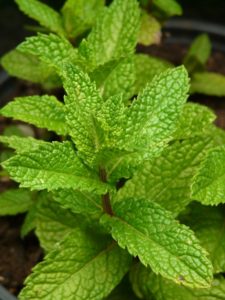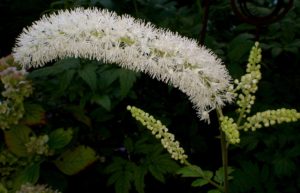11 Herbs for Menopause and Perimenopause
For me, while I am my time of transition, my menstrual migraines got worse, to the point I was losing one to two days per month wasting it in bed and in severe pain. I now take an herbal blend with many of the herbs mentioned below and this has helped me immensely.
Around the age of 40 women begin perimenopause and the transition to menopause. During this time levels of estrogen, progesterone and the androgens fluctuate. Your body will spend years gradually and naturally going through this process. This transition can last 5 to 10 years and for some up to 13 years. Menopause typically occurs between the ages of 45-55. During this time your periods may stop and then start again or may occur more frequently and may increase or decrease in intensity and flow. You are officially in menopause when your period has stopped for one full year.
Herbs to Ease Perimenopause/Menopause Symptoms
Note: Always check first with your health professional when adding in herbs to your regimen. Some herbs interact with meds and some are not safe to take with certain health conditions.
Motherwort: This herb can be your ally in reducing irritability and anxiety that may occur during the transition time. It can calm the heart during perimenopause heart palpitations. If you have heavy bleeding during perimenopause, then don’t overdo the use of this herb. It can aid in menopausal insomnia. Avoid this herb if you have low blood pressure. Take in tea or in tincture. 50-80 drops 2-4 times per day in tincture form. As a tea use 1 tsp. of dried herb. Drink 4 oz. three times per day.
Shatavari: This herb is a wonderful one to use during these times of transition. It is useful for hot flashes, night sweats, vaginal dryness, anxiety and memory loss. It also is known to increase libido. As a tincture, use 40-80 drops 3x per day. As a tea use of dried root and consume up to 2 cups per day. Avoid if you have diarrhea and bloating or add ginger and consume as a tea only.
Passion Flower: This herb has many uses and it is useful for menopausal mood swings. It can aid in reducing panic attacks, calms irritability and helps with stress relief. If you can’t turn your mind off at night, use passion flower. Use in tea blend or take 60-80 drops of tincture 3 times per day. Avoid with bipolar, schizophrenia and manic phases. Do not use with MAOI’s.
Sage: This is beneficial for stimulating memory and is useful for the brain fog that is sometimes associated with perimenopause. It is also good for excessive sweating which means it can be supportive for those with night sweats during perimenopause. It is also used for anxiety, hot flashes and fatigue associated with menopausal symptoms. Take in tincture 30-60 drops 2-3 times per day or use 1 tsp. in a tea blend 3 times per day.
Fennel: While you may be familiar with fennel for digestive issues, fennel is used to offer hormonal support as well. One of its main components appears to have natural hormone like actions. It can be useful for bloating, menstrual pain and hot flashes. As a tea use 1-2 tsp in one cup hot water.
Skullcap: This herb is considered a brain tonic and is useful for ADD, poor memory and mental fatigue. It is also useful for PMS, menstrual pain/cramps, menopausal depression and mood swings, hot flashes and irritation. Use in a tea blend or take ½ t. of tincture as needed. Avoid with bipolar, schizophrenia and manic phases.
Kudzu root: This herb is beneficial for PMS and peri menopausal symptoms such as acne, hot flashes, night sweats, and mood swings. Take in tincture form of 60 drops 2-3 times per day.
Lemon Balm: Use this herb for menstrual cramping and depression associated with perimenopause. This is considered a very safe herb and safe for children as well. However, if you have low thyroid issues it is best to minimize the amount of lemon balm you consume as it can lower thyroid function.
Hops: This herb is used for menstrual cramping. This is best used in tea or tincture. It also has a sedative effect. As a tincture, take 30-60 drops 2-3 times per day. Avoid with usage of sedative medication. Do not use if you have depression.
Black Cohosh: This herb has been popularized for use for hot flashes yet it also has many other beneficial uses. This herb can also be useful for those with depression. Avoid use of this herb if you have liver disease. Take 20-40 drops of tincture per day.
Chaste Tree Berry: Some of you may be familiar with Chaste Tree (Vitex) for hormonal support, however a word of caution-it is very easy to overdo it with this herb. Taking too much may increase progesterone levels and thus increase your symptoms. If using this herb, take only one capsule per day in the morning or 15 drops of tincture in the morning. Avoid usage if you are taking antipsychotic medications.
Pycnogenol: (actually it is 12 with the addition of this one but Pycnogenol supplement is not an herb per se rather an extract) This is a branded, registered trade form of French maritime pine bark extract and has a number of uses. It can be useful for endometriosis, painful periods, menopausal symptoms and can reduce fine lines and wrinkles (at 100 mg. per day). A recent study builds upon evidence from previous studies showing that it can reduce elevated cardiovascular risk factors that are often related to perimenopause such as increased triglycerides, elevated blood pressure and blood sugar. Those participating in the study also had reduced hot flashes, reduction of night sweats and mood improvement.
Going Beyond Herbs to Reduce Symptoms
For some of you with mild symptoms, an herb or two may do the trick. For those of you that continue to struggle with symptoms your body may need more support than just a few herbs. Addressing and identifying imbalances in the body will be key for you, such as addressing blood sugar, adrenals, thyroid, digestion and/or other areas to restore balance. Dietary changes along with targeted supplementation may be needed depending on your current diet and symptoms.
For instance, some of you may enter perimenopause sooner than others due to poor health or due to your diet.
Estrogen dominance becomes an issue along with its side effects during perimenopause for some due to low progesterone levels. The key is to find out what is the issue for you and then address it.
The bottom line is yes, there is something you can do instead of having to put up with these symptoms for years!
Sources
Blankenship, V. (2016) Sage Herbal Foundations Program. Colorado Springs, CO. (notes from)
Bauman, E. & Friedlander, J. (2014) Therapeutic Nutrition. CA: Bauman College
Cech, R. (2016) Making Plant Medicine. Oregon: Herbal Reads
Crow, D. (2016) Medicinal Plants & Spiritual Evolution Intensive. Online Program (notes from)
Mars, B. (2007) The Desktop Guide to Herbal Medicine. CA: Basic Health Publications, Inc.
Skenderi, G. (2003) Herbal Vade Mecum. NJ: Herbacy Press
Winston, D. & Maimes, S. (2007) Adaptogens: Herbs for Strength, Stamina and Stress Relief. VT: Healing
Arts Press.
If you are sick and tired of feeling sick, tired, fatigued, depressed, anxious and more and have given up hope then Karen’s simple, effective, individualized and sustainable approach may be what you need.
Karen Brennan, MSW, CNC, Board Certified in Holistic Nutrition and Herbalist is the author of Tru Foods Depression Free Nutrition Guide; How Food Supplements and herbs can be used to lift your mood and owner of Tru Foods Nutrition Services, LLC.
For more information visit www.trufoodsnutrition.com
Get her Food Swap Guide here to get started on your health journey today! Want more information, like her fb page here
As a nutrition professional, Karen does not treat, cure nor diagnose. This information is for educational purposes only.




Can I simply just say what a comfort to discover an individual who actually knows what they’re discussing online. You actually understand how to bring a problem to light and make it important. More and more people should check this out and understand this side of your story. I was surprised you aren’t more popular given that you certainly have the gift.